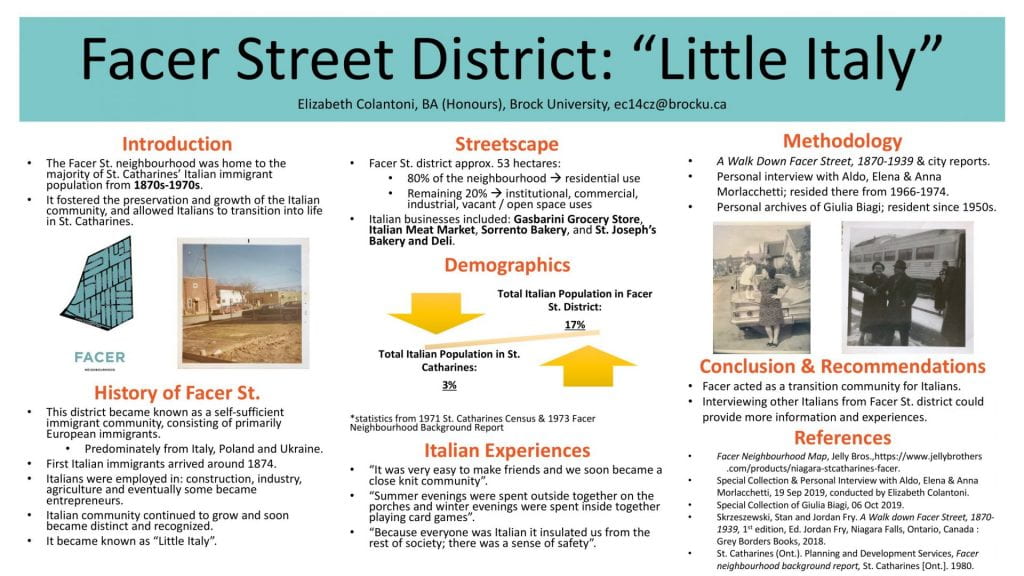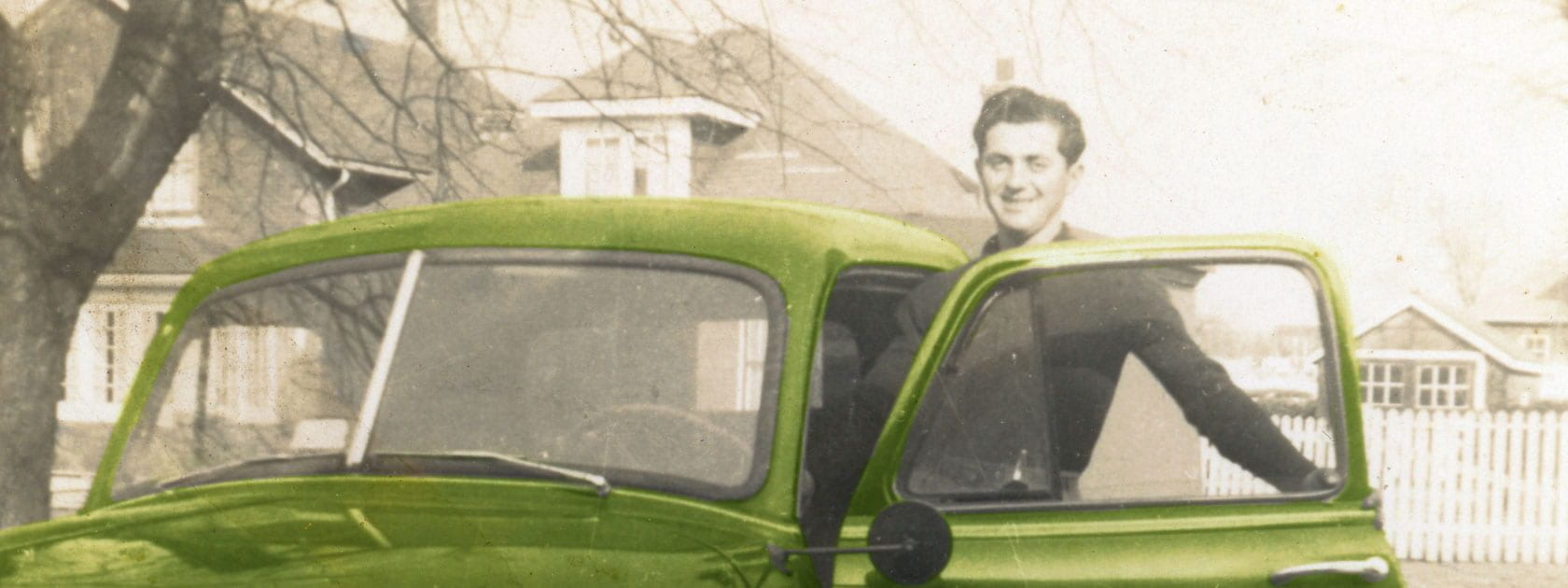
Table of Contents
An Introduction to Facer Street District: “Little Italy”
The Facer Street Neighbourhood played an important role for Italians, as it was home to the large majority of St. Catharines’ Italian immigrant population from the 1870s to the 1970s. Moving together to a neighbourhood allowed for familiarity and a sense of home while starting a new life in a new country. The Facer Street District fostered the preservation and growth of the Italian community while allowing Italians to transition together into life in St. Catharines.
Due to the sense of camaraderie within the neighbourhood, many of the Italians worked together and spent time together as friends. Since this area was home to Italian immigrants for over 100 years, this poster and research focuses on how the neighbourhood created a safe environment for them to practice their culture and customs while integrating into Canadian society.
History of Facer Street
Beginning in the late 1800s, there was a wave of European immigrants to Canada; including St. Catharines. Much like the Eastern Europeans, Italian immigrants were deemed “undesirable” (Skrzeszewski & Fry, 7). Therefore, they needed a place to come together. The Facer Street Neighbourhood is in the North-East end of St. Catharines. Due to its distance from the city center, it became isolated and developed a distinct identity. While other marginalized groups made their homes there, it was mainly European immigrants from Italy, Poland, and Ukraine. This district became a self-sufficient immigrant community and eventually became known as the “foreign corner” (Skrzeszewski & Fry, 8).
The first Italian immigrants arrived around 1874. Initially it was just men who would come to work for a season in Canada then return home with their earnings. This changed around the 1900s when families began coming over and permanently immigrating. The Italian community continued to grow and soon became recognized within the city. During this large wave of Italian immigration after World War II, the Facer Street District became known as “Little Italy” (Skrzeszewski & Fry, 8). Italians were employed in the construction industry, agriculture, and eventually some became entrepreneurs.
Streetscape
According to the 1973 Facer Neighbourhood Background Report; 80% of the land use was residential and the remaining 20% was divided between institutional, commercial, industrial, and vacant/ open space (4). Throughout the years, Italian businesses included: Gasbarini Grocery Store, the Italian Meat Market, Sorrento Bakery, and St. Joseph Bakery and Deli.
Demographics
The 1971 St. Catharines Census confirms that at the time only 3% of the city’s population was Italian, while 17% of the population in the Facer Street District was Italian. Having this large community in the district meant they could support each other in various ways.
Methodology, Conclusions & Recommendations
Written histories and documents, such as A Walk down Facer Street, 1870-1939 and 1970s St. Catharines City Reports, were helpful in understanding the characteristics of this neighbourhood. However, it was the personal interview and special collections of the Morlacchetti family – who lived there from 1966 to 1974 – and Giulia Biagi – who has lived there since the 1950s and continues to reside there – that truly illustrated what being part of this Little Italy was like, and how it functioned as a transition community for Italians. Therefore, speaking with other Italian immigrants who lived there would offer further insight.
Elizabeth Colantoni
Brock University, 2019
Works Cited
Biagi, Giulia. The Private Collection of Giulia Biagi. 06 October 2019.
Biagi, Giulia. “Photograph of Facer Neighbourhood,” in The Private Collection of Giulia Biagi.
Biagi, Giulia. “Photograph of Giulia and her brother Domenico at the train station.” The Private Collection of Giulia Biagi.
Colantoni, Elizabeth. Personal Interview of Aldo and Elena Morlacchetti. 19 Sept. 2019.
Morlacchetti, Aldo & Elena. “The Personal Collection of Aldo & Elena Morlacchetti. 19 September. 2019.
Morlacchetti, Aldo & Elena. “Photograph of Elena and her daughter Anna in the Facer Neighbourhood,” in The Personal Collection of Aldo & Elena Morlacchetti.
Facer Neighbourhood Background Report. St. Catharines [Ont.]:bThe Dept: N.p., 1980. Print.
Skrzeszewski, Stan, and Jordan Fry. A Walk down Facer Street, 1870-1939. 1st edition / August 2018. Niagara Falls, Ontario, Canada: Grey Borders Books, 2018. Print.


